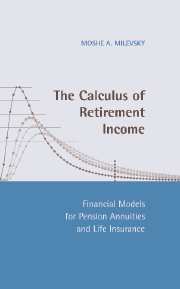9 - Sustainable Spending at Retirement
from II - WEALTH MANAGEMENT: APPLICATIONS AND IMPLICATIONS
Published online by Cambridge University Press: 06 July 2010
Summary
Living in Retirement
Jorge Guinle—the famous Brazilian playboy—died on Friday the fifth of March 2004 in Rio de Janeiro. Jorge was born to one of the wealthiest families in Brazil, and he spent a large part of his life dating famous Hollywood starlets such as Rita Hayworth, Lana Turner, and Marilyn Monroe. This hobby was quite expensive and apparently he squandered most of his family's fortune well before he died at the age of 88. In fact, in an interview a few years before his death, Jorge said: “The secret of living well is to die without a cent in your pocket. But I miscalculated, and the money ran out too early.”
I do not know whether Mr. Guinle spent too much, invested too poorly, or lived too long. All three factors likely contributed to his unfortunate situation, and the objective of this chapter is to carefully model the chances of “dying without a cent in your pocket” using the probability tools developed in the last few chapters. More specifically, I will compute the probability that, under a given asset allocation and spending policy, you will run out of money while still alive.
To better understand the nature of risk management during retirement, the triangle in Figure 9.1 provides a graphical illustration of the relationship between (what I consider to be) the three most important factors in retirement planning: spending rates, investment asset allocation, and mortality considerations.
- Type
- Chapter
- Information
- The Calculus of Retirement IncomeFinancial Models for Pension Annuities and Life Insurance, pp. 185 - 214Publisher: Cambridge University PressPrint publication year: 2006



